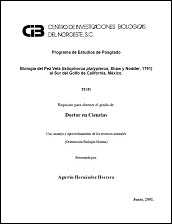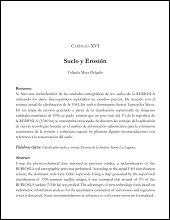Intraspecific eye color variability in birds and mammals: a recent evolutionary event exclusive to humans and domestic animals
Autor
juan Negro
María del Cármen Blázquez Moreno
Ismael Galván
Metadatos
Mostrar el registro completo del ítemResumen
"Background: Human populations and breeds of domestic animals are composed of individuals with a multiplicity of eye (= iris) colorations. Some wild birds and mammals may have intraspecific eye color variability, but this variation seems to be due to the developmental stage of the individual, its breeding status, and/or sexual dimorphism. In other words, eye colour tends to be a species-specific trait in wild animals, and the exceptions are species in which individuals of the same age group or gender all develop the same eye colour. Domestic animals, by definition, include bird and mammal species artificially selected by humans in the last few thousand years. Humans themselves may have acquired a diverse palette of eye colors, likewise in recent evolutionary time, in the Mesolithic or in the Upper Paleolithic. Presentation of the hypothesis: We posit two previously unrecognized hypotheses regarding eye color variation: 1) eye coloration in wild animals of every species tends to be a fixed trait. 2) Humans and domestic animal populations, on the contrary, have eyes of multiple colors. Sexual selection has been invoked for eye color variation in humans, but this selection mode does not easily apply in domestic animals, where matings are controlled by the human breeder. Testing the hypothesis: Eye coloration is polygenic in humans. We wish to investigate the genetics of eye color in other animals, as well as the ecological correlates. Implications of the hypothesis: Investigating the origin and function of eye colors will shed light on the reason why some species may have either light-colored irises (e.g., white, yellow or light blue) or dark ones (dark red, brown or black). The causes behind the vast array of eye colors across taxa have never been thoroughly investigated, but it may well be that all Darwinian selection processes are at work: sexual selection in humans, artificial selection for domestic animals, and natural selection (mainly) for wild animals."
Colecciones
Ítems relacionados
Mostrando ítems relacionados por Título, autor o materia.
-
PROMOCIÓN DEL PERIFITON PARA EL CULTIVO DE CAMARÓN BLANCO: HACIA UNA ACUICULTURA ECOLÓGICA
DOMENICO VOLTOLINA LOBINA; JUAN MANUEL AUDELO NARANJO; MARIA DEL ROSARIO PACHECO MARGES -
Suelo y Erosión
YOLANDA LOURDES MAYA DELGADO


